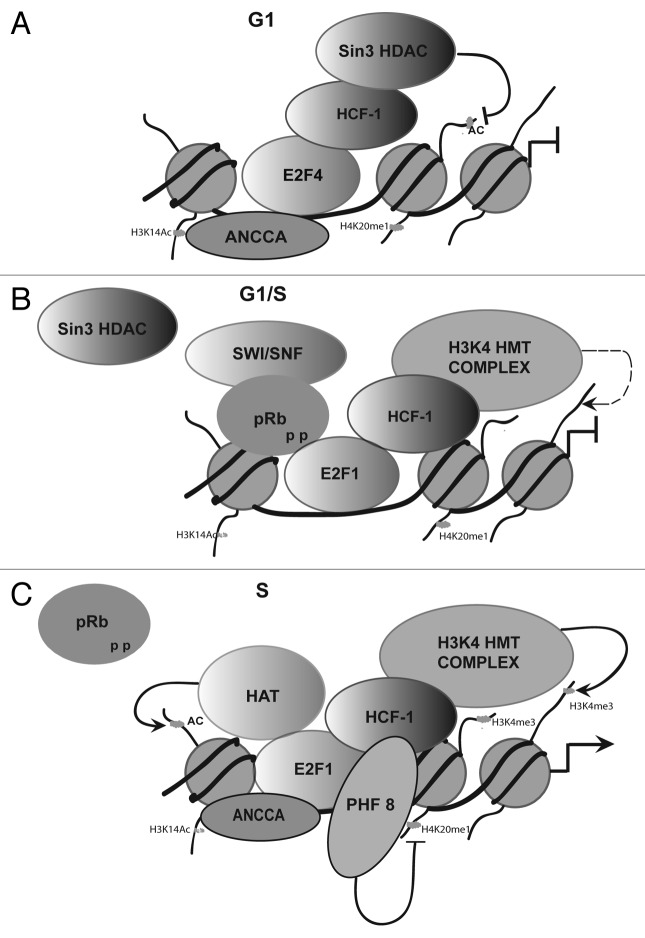Figure 1. Model for E2F-HCF-1 complexes during the cell cycle. This model illustrates the interactions of HCF-1 with various members of E2F family during the cell cycle and the different co-factors associated with them. (A) During early G1 phase, HCF-1 interacts with E2F4 and recruits Sin3 HDAC to E2F-responsive promoters. We speculate that this mechanism of repression is independent of pocket proteins. ANCCA binds to E2F-promoters in late mitosis. However, we do not know if HCF-1 and ANCCA co-occupy these promoters at this time. (B) This model proposes that HCF-1 forms an intermediate complex with pRB-E2F, where pRb has undergone phosphorylation by cyclin D /CDK4 but still remains bound to E2F. As the G1 to S phase transition progresses, this intermediate complex is freed of pRb by subsequent phosphorylation by cyclin/CDK complex thereby switching from repressive (pRb) to activating (HCF-1) E2F-complex.23,37 (C) Here we speculate the co-factors associated with E2F1 during S phase. ANCCA gets recruited to chromatin by binding to H3K14ac mark. Here it facilitates the loading of E2F to the chromatin. HCF-1 binds to E2F to promote the activation of S-phase genes by recruiting H3K4 HMT (MLL /Set1) and stimulating H3K4 trimethylation of gene promoters. PHF8 binds to H3K4 me2/3 mark and interacts with HCF-1. It removes the repressive H4K20 me1 marks at these promoters. Previous reports have shown that several histone acetyltransferase (HAT) are required for E2F activity.38-41

An official website of the United States government
Here's how you know
Official websites use .gov
A
.gov website belongs to an official
government organization in the United States.
Secure .gov websites use HTTPS
A lock (
) or https:// means you've safely
connected to the .gov website. Share sensitive
information only on official, secure websites.
